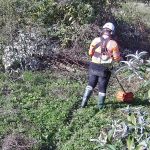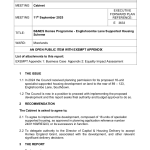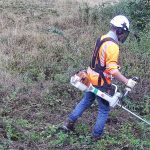This is the third in a series of posts about traffic volumes and speeding in Englishcombe Lane. This time we focus on the survey analysis and the wider debate around 20mph zones.
The dialogue with the Council continues and here is the verbatim response to a request from Councillor Jess David from Neil Terry, a Principal Engineer from Bath and North-East Somerset Council’s Traffic Management team (Traffic Management Team, Lewis House, Manvers Street, Bath BA1 1JG)
“Hello Councillor David,
As you will appreciate, Englishcombe lane is fairly similar to Bloomfield Road in terms of its length, use and nature, and it also serves in a similar purpose from a traffic origin and destination perspective. As I explained when we met recently, there are a few traffic management measures that could have a positive impact on vehicle speeds but, clearly, it would be very expensive to treat such a long road. I appreciate that there are already some traffic management measures in place along its length but, from what you’ve said about the 85%ile speeds, it doesn’t appear that these are having a significant impact on speeds.
As with many roads that provide relatively direct access into bath , or provide a useable alternative route to the classified road network, we have received correspondence in the past requesting measures to address road safety concerns, but there are currently no proposal for Englishcombe Lane in our Transport Improvement Programme (TIP). As you will know, discussions around the content of the next TIP will commence over the coming months but, inevitably, demand will far outstrip the funding that will be available.
I will add Englishcombe Lane to our list of roads to be assessed for possible inclusion in a future TIP but, if it was successful, I would suggest that (similar to Bloomfield Road) a feasibility study would be appropriate in the first instance, so that we can work out what measures could be appropriate, how much they might cost, and establish some degree of priority if the whole road cannot be treated. Indeed, a phased approach might be the only way forward in the circumstances (length of the road etc.).
I trust that the above is helpful, but please let me know if you need anything further at this time.”
So it is unlikely that any further measures will be forthcoming in the near-term. Likeliest is that any developer for the Tufa Field will have to also foot the bill for traffic measures.
Clearly also, the Council does not have the resources to achieve its ambitions, and the wider debate has to be over the blanket introduction of 20mph zones as effective safety and well-being measures.
In order to widen the debate and include other districts where this is of concern, an edited version of the article below appears in the December Bath Voice.
20 mph – Bane or BANES?
The widespread introduction of 20 mph zones continues to be controversial, and, a recent survey in Englishcombe Lane confirms, largely ignored.
Which begs the question, are these zones performing a useful function or simply virtue-signalling by the Council?
The intention behind them, to make roads safer, to reduce noise and pollution impacts and to make neighbourhoods pleasanter places to live is laudable. The reality is, so far, the motorist has not bought into it.
In September this year, in response to a survey carried out by residents of Englishcombe Lane, the Council installed traffic speed and flow monitors. The results of that survey confirmed our survey and are somewhat disappointing for the 20 mph proponents. .
The survey tracked some 25,000 vehicle movements over 6 days, and showed that the 85 percentile (speed at which 85% of all vehicles are travelling at or below) was 30mph, so well above the 20mph limit. Or put slightly differently, some 16,000 vehicles exceeded 20 mph over the period.
In addition, 1% were above 35 mph, ( ie 250 vehicles in the period). 10 vehicles were also clocked at speeds above 45 mph and the highest individual speed recorded was 57 mph.
We were also able to analyse time of day speeds, and perhaps most disappointingly, average speeds rose significantly around School run time ( 8-9 am and 3-4pm), suggesting that parents have not bought in to the safety of children on the way to school.
And what if you are concerned about your neighbourhood vehicle speeds? Local speedwatch groups, backed by the Police, are sometimes used, but their effectiveness is dubious and they can be very divisive. Our experience is that the Council needs evidence before even considering measures, so you need to gather that. Contact your local councillor and ask them to request a survey.
We found the survey team to be very responsive and the raw data was made available. Unfortunately, you will have to do the analysis yourself, so spreadsheet IT skills will be needed.
If you want to see our survey results in full and see how you can carry out your own, visit this page
So does any of this matter?
There have not been any reportable accidents or incidents on this stretch of road for many years, the presence of the occasional police speed camera clearly has no impact and it is seems that the public at large, by their actions, reject the speed limit.
It is also clear that there is a disconnect between the Council actions and implementation. Recent communication confirms there is no available budget to implement prevention measures. But surely there is simply no point in spending money on introducing these limits, if there is not the money to enforce them, either by punishment or prevention.
Perhaps the answer is to impose and enforce restrictions in areas where there are clearly higher risks –outside schools, play areas, crossings or where there are vulnerable people, rather than blanket zones which are ignored along their length. Or adopt the U.S. style, where inside the city limits is 25 mph everywhere.
And perhaps whether you regard 20mph as bane or benefit changes, depending on whether you are behind the wheel at the time ?…..














 Total views : 100576
Total views : 100576

Leave a Reply